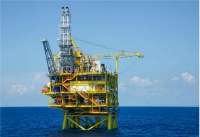MEDAN. State-owned PT Indonesia Asahan Aluminium (Inalum) plans to build two new factories and a 600-megawatt steam-fueled power plant to boost its aluminum production to 650,000 tons per year.
According to Inalum’s general affairs and human resources director, Nasril Kamaruddin, the company would spend around US$2 billion on the construction of the new power plant in Kuala Tanjung, North Sumatra, as well as an alumina factory in Mempawah, West Kalimantan, and a carbon factory in North Sumatra.
“We will cover the costs from our internal cash amounting to Rp 4 trillion [$333.7 million], while the remainder will be covered by bank loans,” Nasril said over the weekend.
Inalum president director Sahala Sijabat said that the construction of the new factories and power plant was part of the firm’s strategic corporate plan to gradually increase production.
“We have so far produced 250,000 tons of aluminum ingots from our factory in Asahan, North Sumatra,” he said.
“We aim to produce 260,000 tons this year, 425,000 tons in 2017 and 650,000 tons thereafter when the construction of the factories and power plant is complete.”
Sahala said that Inalum had previously imported between 450,000 and 490,000 tons of alumina from Australia every year to produce aluminum ingots, but would stop doing so when the new alumina factory was fully operational.
Indonesia — the top supplier of aluminum to China, the world’s biggest metal user — has yet to have a plant that can convert bauxite, an abundant ore in Indonesia, into alumina.
Inalum’s development director, Winardi Sunoto, said the government, via the State-Owned Enterprises Ministry, had offered the company the chance to join state-owned diversified miner PT Aneka Tambang (Antam) in building a smelter-grade alumina plant in Mempawah, to help secure its supply of raw materials. “Inalum will talk about this matter with Antam later this year,” he said on Monday.
Antam’s president director had previously said the firm was seeking a partner to hold 30 to 35 percent ownership in the plant project.
The $1.5 billion plant is expected to have an annual production capacity of 1.2 million metric tons of alumina.
Antam has finalized a feasibility study for the project and is expecting to begin the plant’s construction by early 2015 at the latest. The plant’s commissioning date is scheduled for 2017.
Sahala said that besides aiming to increase its output, Inalum would also diversify its products by manufacturing billet and alloy.
“We will produce these products and sell baked carbon anodes in the near future. We produce around 10,000 tons of anodes per year, but we never sell them,” he said.
Sahala said that Inalum stopped exporting 60 percent of its aluminum ingots to Japan in November last year, after the government bought shares in the company owned by the Japanese consortium, Nippon Asahan Aluminium Co. Ltd. (NAA).
“We currently export 20 to 30 percent of our total production to China, [South] Korea and some European countries. However, we will stop selling overseas as of April this year,” he said, adding that the product would be directed solely to the domestic market.
Inalum was formerly owned by the government and the NAA to the tune of 41.12 percent and 58.88 percent, respectively, of shares.
The government officially acquired the company on Dec. 19 last year by paying $556.7 million for the Japanese shares, ending the NAA’s 30-year ownership of Southeast Asia’s only aluminum smelter. (koi) (Apriadi Gunawan)
Inalum to spend $2b on new facilities
January 21, 2014, 02.14 PM
/2013/11/11/1365732797p.jpg)
ILUSTRASI. Lulus Kuliah Ingin Jadi Guru? Daftar PPG Prajabatan Tahap 2 2022, Ini Syaratnya.
Source: The Jakarta Post
| Editor: Barratut Taqiyyah Rafie
Latest News
-
December 24, 2025, 05.17 AM
GLOBAL MARKETS-Equities Rise after Strong US Data, Yen Firms on Currency Warnings
-
December 23, 2025, 02.06 PM
Indonesia Expects Normal Wet Season in 2026, Weather Agency Says
-
December 23, 2025, 01.22 PM
GLOBAL MARKETS-Stocks, Precious Metals Rise; Yen on Intervention Watch
-
December 23, 2025, 11.14 AM
Indonesia Eyes US Tariff Deal Signing in January, Says All Issues Settled
-
December 23, 2025, 09.48 AM
Indonesia Trade Negotiator Says All Substantial Issues Settled with U.S.
-
December 22, 2025, 04.15 PM
Indonesia Signs Free Trade Deal with Russian-led Eurasian Economic Union
-
December 22, 2025, 02.01 PM
Indonesia Offers Tenders for Eight New Oil and Gas Blocks
-
December 22, 2025, 09.12 AM
GLOBAL MARKETS-Asia Shares Extend Tech Rally, Yen Under Pressure
-
December 19, 2025, 08.09 AM
GLOBAL MARKETS-Asia Stocks Join Wall Street Rally, Brace for BOJ Hike









